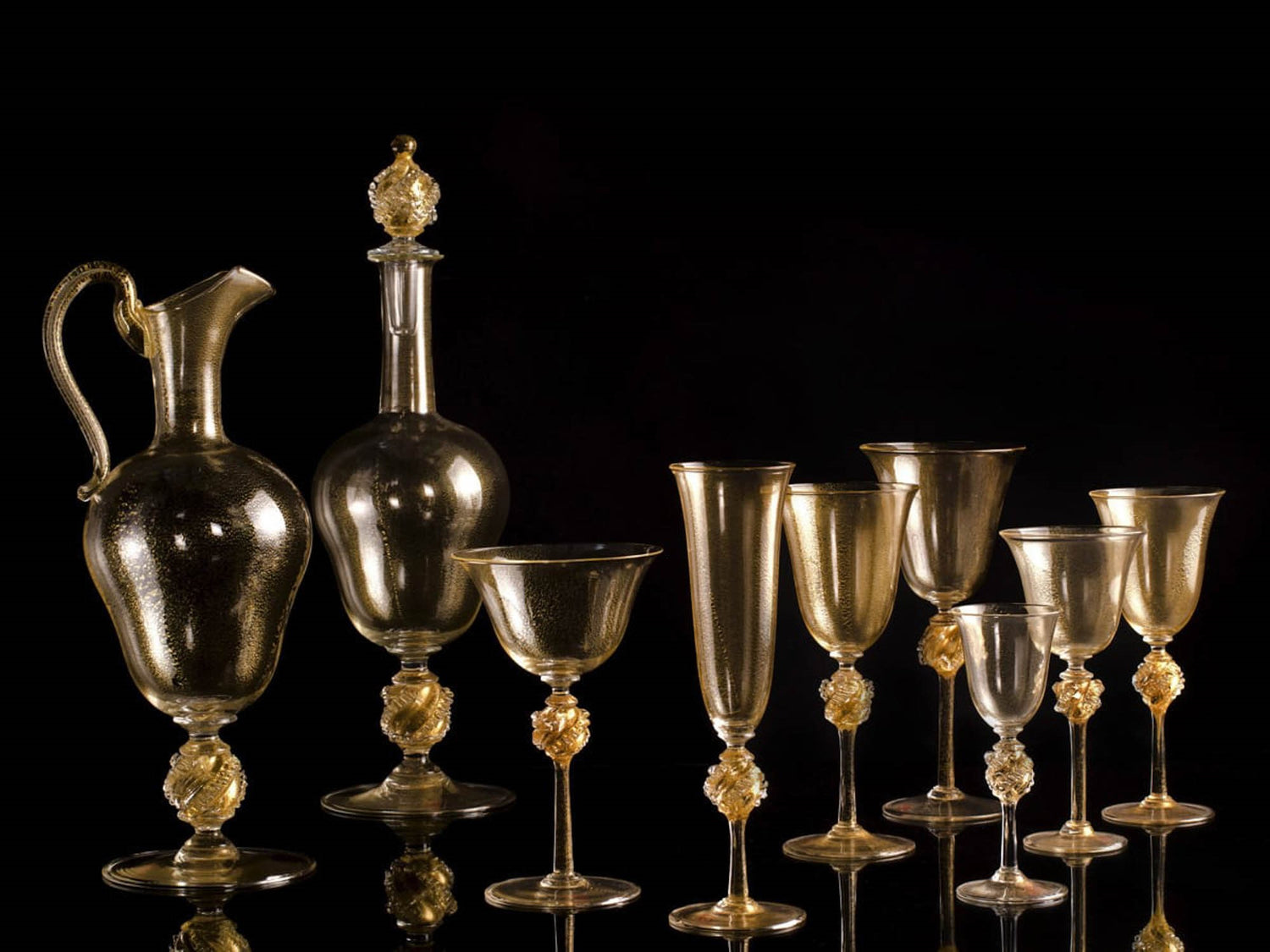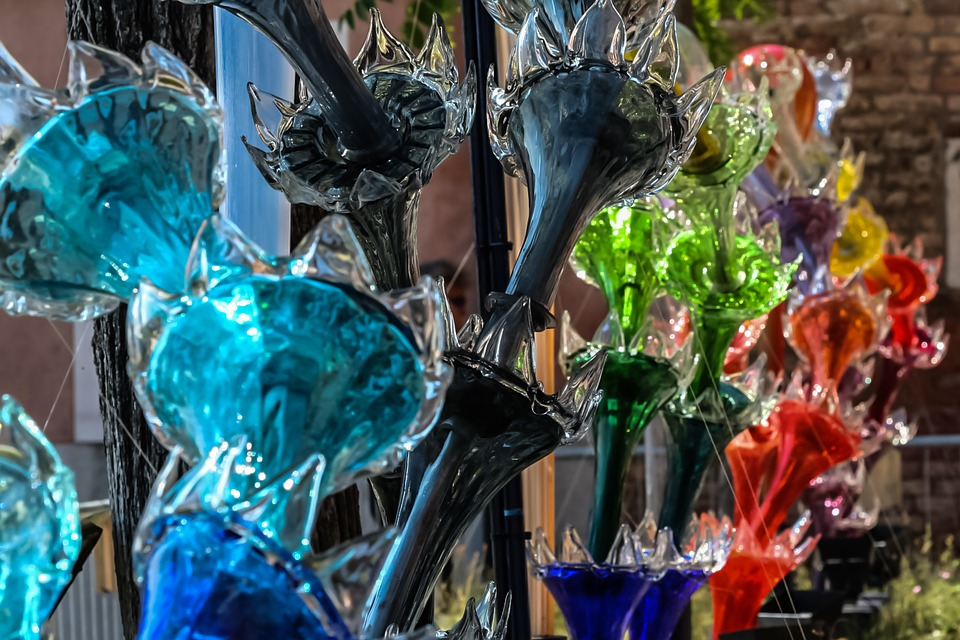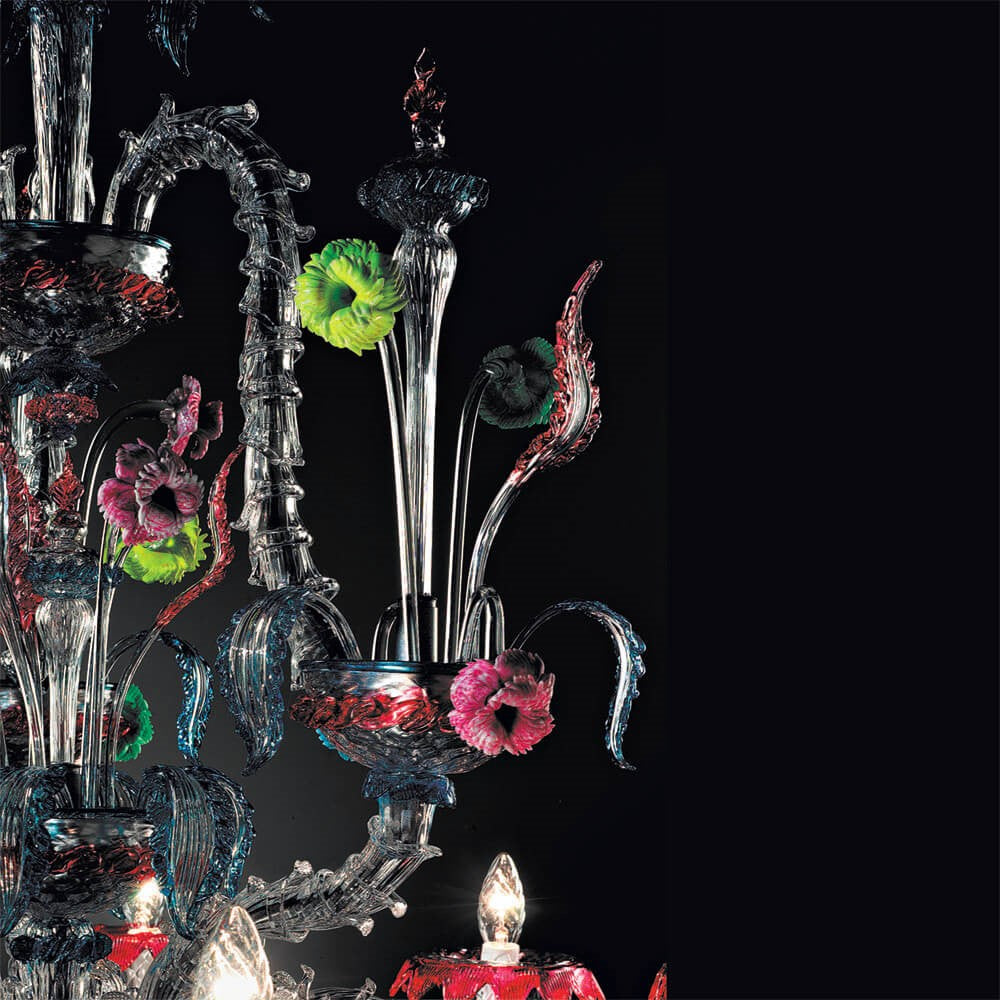Venetian glassware is revered around the globe for its exquisite precision and stunning colour combinations. The craft of glass blowing was practised in Venice before the 10th century. When the increased temperature of the glass kilns threatened the wood-crafted structures of Venice, the government chose to relocate the entire sector to Murano island, which was in the Venetian lagoon.
As they were cut off from the majority of the continent, the island of Murano's glass masters experimented with patterns and pigmentation, creating a slew of magnificent and intricate techniques that helped the island and its glass craftsmanship gain notoriety and reputation.
How Does It Happen?
People have been making glass in Murano, Italy, since the 8th century. It is a very old trade. The Romans were the first people to live in the Venetian Islands, who had to flee from barbarian invasions. After the Venetian society and government were set up, the people living in the Lagoon tried to find out how to make glass like the Romans did.As sand, a key ingredient in glass was very good in Venice, this made glassmaking very popular there quickly.
To make glass, silica, lime, soda, and potassium are combined in an oven at 1,500 degrees Celsius to form glass, a substance that is both hard and pliable.Then, the glassmaker pulls this stuff from the furnace using a conduit and forms it with a variety of specialised devices such as scissors, pliers, and shovels made of wood that have remained virtually unchanged since ancient times.
The term "glass-blowing" describes a process in which a glass object is shaped by blowing into a pipe to fill it with air. To obtain the stunning appearance and color of Murano glass, gold or silver leaf is added to the glass mixtures and/or minerals like zinc for white, manganese for violet, cobalt for blue, etc.
The completed product is stored in a chilling furnace known as a "tempera" where it gently cools.This is known as annealing, guaranteeing that glass does not break due to internalstresses or excessive temperature changes. On that note, let's look at some of the most famous Murano Glassmaking techniques.

1. Millefiori
Millefiori, commonly called Murrine, is among Murano's most well-known and pursued glassmaking methods.In Italian, it means "a thousand flowers," and the ultimate product of this meticulous effort frequently resembles a field of fanciful flowers displaying their vibrant colours.It's difficult to understand how Venetian artisans could manufacture such magnificent Murano glass necklaces, chandeliers, centerpieces, and even lamps.
In the 1600s, some Murano glassmakers began attempting to replicate the wonderful Roman glassware that had been made in the region. As with other glassmaking processes, the secret they unearthed was forgotten again until the 2nd half of the 19th century saw a resurgence in curiosity about these Roman artefacts.
During the period, Murano glass craftsmen were enamoured with glassware made by the early Romans and housed in the famed Murano Glass Museum. Flowers and abstract patterns were often used in the designs on the interior and outside of glass vases and bowls, urns as well as plates that emerged from those times.
It's perhaps the most difficult glassmaking process out there, and it's probably why it's still the calling card of glassmakers in Venice and Murano.There are many steps involved in the creation of a millefiori design, but the process begins with a unique preparation of a glass rod. The cylindrical rod is encased in a thick coating of semi-liquid glass mixture that has been applied in multiple layers.

For each layer, the shape and colour are moulded into a certain pattern.Preparation is completed by stretching and cutting the multi-layered rod into little cylindrical pieces known as "murrine." A specific heat-resistant mould is used to shape the finished product once the murrine has been cleaned and organized in a particular pattern. As soon as that's done, it's time to heat up the mould with the murrine pattern inside of it!
In the glassmaking process, artists utilise many furnaces to fire up the glass mix and deal with it while it's still molten. A smooth Millefiori surface is created when the mould and its components are forced against each other, removing any gaps between the pieces of murrine.After that, it's returned to the furnace to create and shape the finished product.
2. Avventurina
Invented on the island of Murano in the 17th century, Avventurina is a glassmaking technique used to make Murano Glass.As early as 1614, when it was described as "a type of stone with golden stars inside," it had already captured the attention of onlookers with its distinctive and alluring appearance.
By accident, a glass artist is reported to have carelessly poured a few metal shavings into a glass mixture, which led to the creation of the technique.Avventura (Italian for chance) is how the Italians describe how it happened.
Aventurine glass was first made famous by Murano expert glassmaker Giovanni Darduin in 1644 when he published a formula detailing the process of creating it.The procedure calls for adding different metal oxides to the heated glass composition, like iron and copper, which will produce microscopic metal particles to crystallise as the glass begins to cool.
The procedure was complicated by the fact that for such crystallisation to happen, the furnaces had to be completely turned off, and the metallic particles would progressively split from the glass foundation over a few days as the glass cooled naturally.
From a technical standpoint, this was a challenging operation since each whenever a glass furnace went out, production had to be halted, so re-igniting it was a lengthy process because it required time to properly reheat it to the required temperatures.

3. Sommerso
"Sommerso," which literally means "submerged" in Italian, is among the most prevalent techniques. This method is used to generate multiple layers of glass (typically in opposing hues) inside a specific item, giving the appearance of "immersed" colours that rest on top of one another without combining.
This is accomplished by melting various layers of glass together and putting them in melted coloured glass pots repeatedly. This approach is easily identified by an exterior layer of colourless glass and dense layers of colourful glass within it as if a large drop of colour had been trapped inside the translucent glass.
Whenever you first view these sculptures, it's difficult to imagine such lovely colours being held so precisely inside what appears to be solid glass. One quickly wonders how they managed to create such a complicated combination of patterns and colours right in the midst of a transparent glass object.

4. Chalcedony
The technique of manufacturing Chalcedony or Calcedonio glassware was first utilised in Egypt during the Roman era, and it was later rediscovered in Murano in the fourteenth century. The method's secret became lost for a while before being rediscovered in the late 1800s by a Murano professional glassmaker, Lorenzo Radi.
This method entails fusing pieces of coloured and white iridescent or opaline glass and Cristallo glass together at hot temperatures. Different mineral oxides are periodically added to the glass solution and scattered to generate unique colour effects after the pieces have fused entirely.
There are a number of these, such as cobalt oxide to produce blue shades, nitrate of silver to give a matte finish, potassium oxide, and others.This procedure results in more prominent colour streaks created by mineral oxides as the glass bends while it is extruded into the required shape and form.
Due to its unique chromatic effects and resemblance to pricey semi-precious stones, Chalcedony glass was extremely popular in the Venetian Republic and beyond during the 15th and 16th centuries.
Decorative items for noble residences like vases and sculptures were made from it, as well as pitchers, cups, goblets, and bowls for drinking.Murano craftsmen later in the 17th and 18th centuries began mixing melted Avventurina glassware with chalcedony glassy paste to add dazzling touches to the appearance.
People interested in buying Murano Glass pieces made using the Chalcedony technique can look for them here.

5. Fenicio
Ancient Egyptian and Phoenician civilizations were the first to apply the ornamental glass technique known as Fenicio, Festooned, Ploomed, or Feathered Glass. Artisans in Murano, Italy, had been trying to find a way to replicate archaeological glassware and bring back the abilities of ancient civilizations by creating the characteristic colourful festooned embellishments observed in numerous archaeological findings.
This endeavour was finally successful in the 16th or early 17th century when its recipe was discovered. After blowing a glass piece, the artists apply a translucent paste of a different colour in threads surrounding it to get the bird-like plumage effect.
A specific instrument termed manereta or sgraffon is used to comb through the threads and make wavy or feather-like decorations on a glass object's surface after the first phase. Afterwards, the piece is reheated, tumbled on the marver, and blown once more, creating new designs and patterns.
For decades, the Fenicio technique, which Murano's gifted glass artists rediscovered, has enjoyed widespread acclaim. Bowls, cups, pots, even sculptures, and figures have all been made from it. It's particularly fascinating to witness early specimens of Fenicio or Ploomed glass objects unearthed by archaeologists in the Arabian Peninsula, which are currently on display in various museums across the world.
People interested in buying Murano Glass pieces made using the Fenicio technique can look for products here.

6. Bullicante
Among the best-known glassmaking processes is the "bullicante" effect, which can be seen all over the island of Murano.There are numerous examples of the "bullicante" effect in Murano, one of the world's most famous glassmaking processes. As a tourist in Venice, you may have spotted magnificent glass pieces with microscopic air bubbles confined inside and wondered how that almost impossible appearance is created.
You can get this unusual look by putting hot glass into an iron mould with spikes that resemble the surface of a pineapple. This glass has a design all around because of the spikes poking through the surface. All of the glass is then re-molten once it has been allowed to cool down. You can see the first layer clearly through this second layer.
As a result of this, the air is trapped between the two layers of glass because the second layer's thick consistency did not cover the first layer's perforations. The glass master can repeat this technique as many times as he or she likes to create a pattern as complex as desired. This approach not only creates a feeling of depth in the item, but it also has a unique ornamental appearance that is widely recognised.

7. Gold And Silver Leaf
When it comes to crafting Murano glass, it's all about the gold foil or gold leaf ornamentation that creates that rich, elegant, and sophisticated aesthetic that people can't get their eyes off of. Murano was the birthplace of silver and gold leaf ornamentation, which was first applied to glass mosaics, wall hangings, and tableware such as cups, dishes, and goblets in the fourteenth century.
The glass master must first roll small sheets of 24K gold or.925 silver onto molten glass mass throughout most of the early stages of glass-blowing to incorporate silver or gold into the glass object. Once the silver or gold leaf covers most of the blob's surface, a secondary layer of transparent glass is applied.
Glass is blown by the master, and as a result, the gold leaf inside is broken up into minute fragments. Using this method, gold is included in the finished product.Alternatively, the gold can be applied directly to the glass object. This is typically done when the object is finished, and the glass has cooled.
An etching tool is used to create a pattern in gold leaf, which is applied to the cool glass piece and then attached to it. With a heated translucent glass coating, the gold is shielded from damage and will not flake off.
Looking To Buy Murano Glass Online? MuranoNet Has It All
Now that we have covered all the common Murano Glass-making techniques, you might be intrigued to buy this piece of artwork. If so, MuranoNet is the best option for it. All of our Murano Glass products are authentic and come with a certificate from the Glassblowers. We have over 2000 items in our inventory, and all of them are of exceptional quality.
Whether you're looking for glass sculptures for sale, unique corporate gifts online, or a Venetian glass chandelier online, we have it all. Contact us now to learn more about our products.




Leave a comment
This site is protected by hCaptcha and the hCaptcha Privacy Policy and Terms of Service apply.